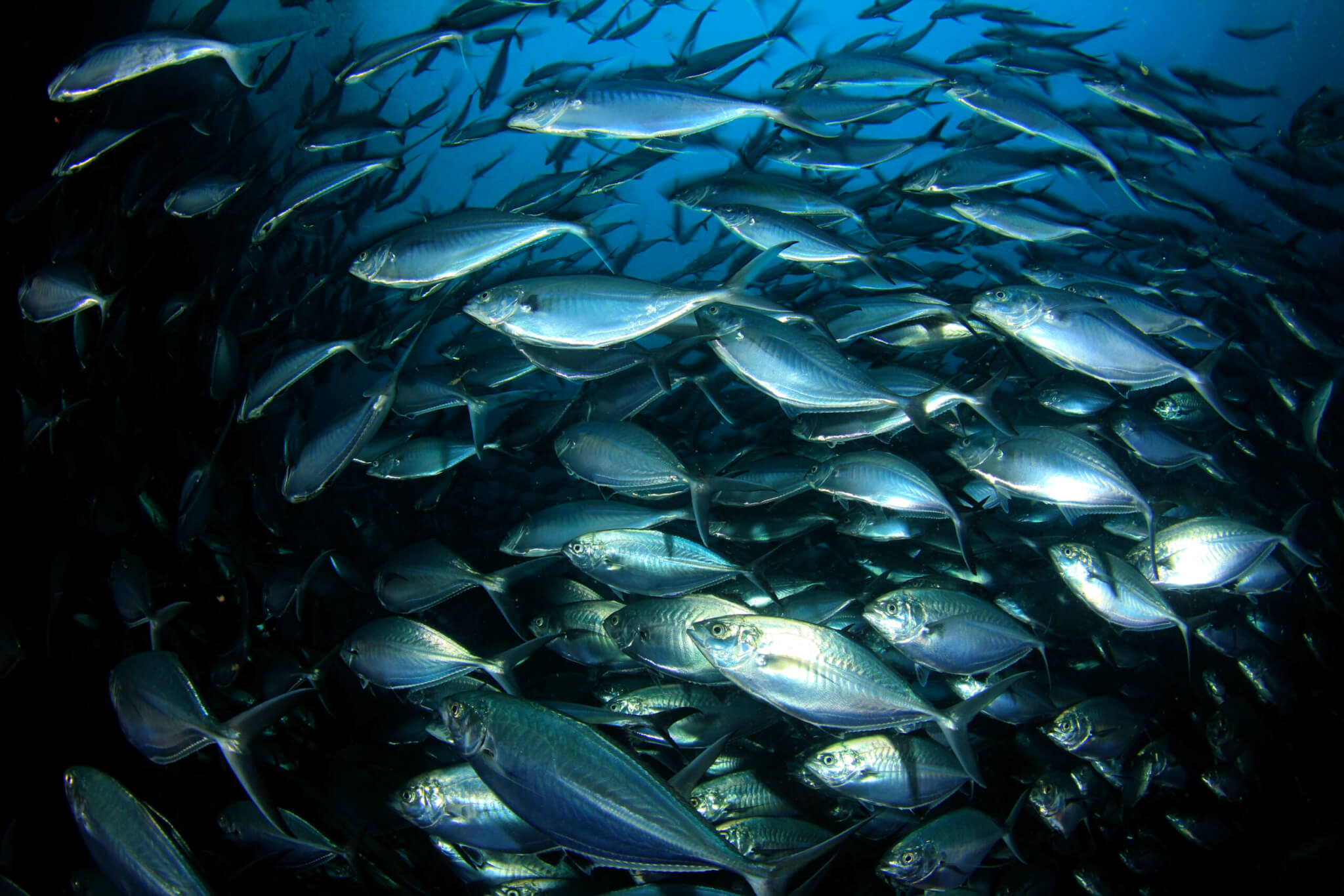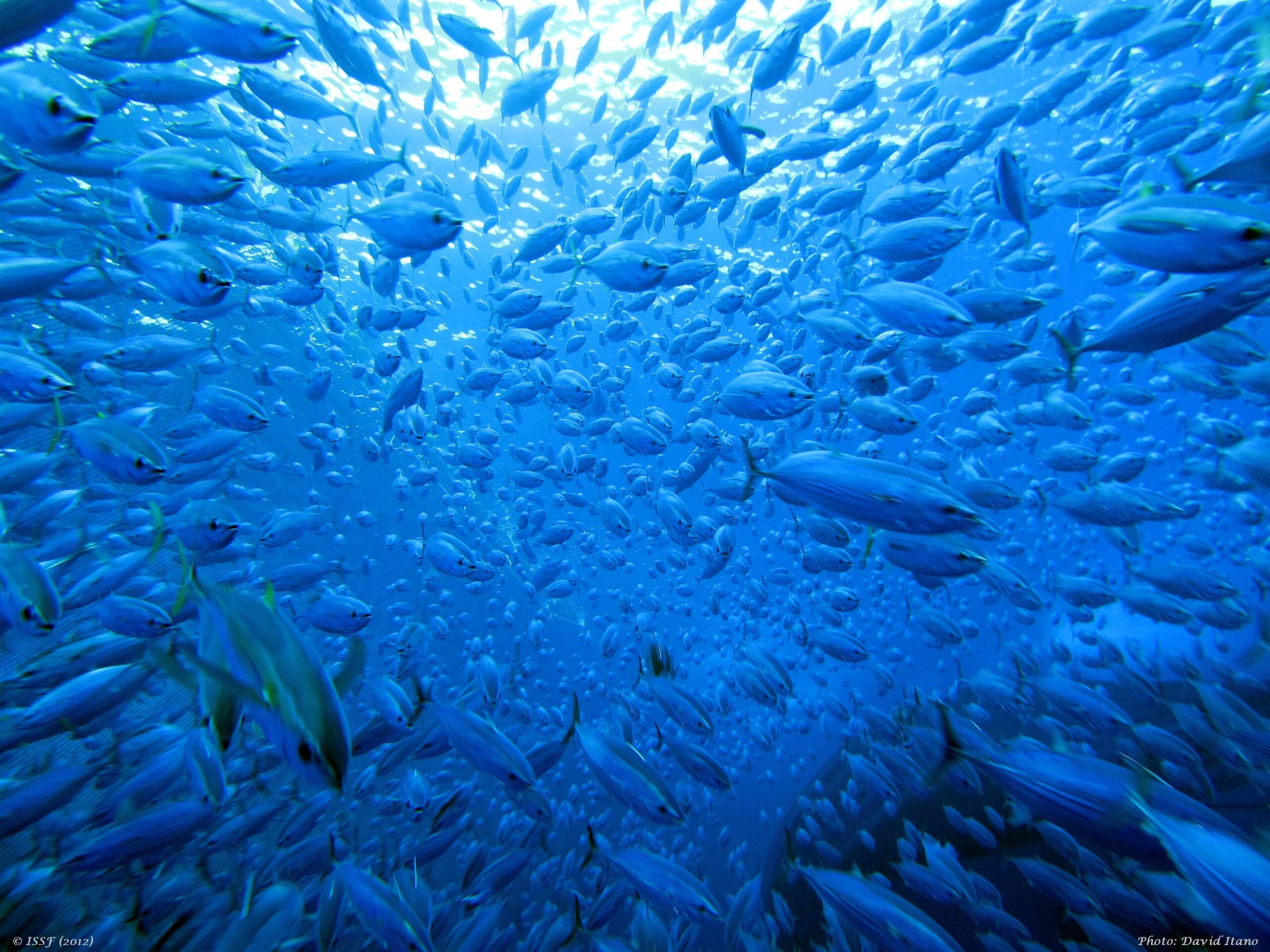
81% of Global Tuna Catch Comes from Stocks at Healthy Levels, While 15% Require Stronger Management
Of the total commercial tuna catch worldwide, 81% came from stocks at “healthy” levels of abundance, according to the October 2019 International Seafood Sustainability Foundation (ISSF) Status of the Stocks report. In addition, 15% of the total tuna catch was from overfished stocks, and 4% was from stocks at an intermediate level of abundance.
Globally, 61% of 23 #tuna stocks are at a healthy level of abundance, 17% are #overfished, and 22% are at an intermediate level. Share on XAlbacore and skipjack stocks in all four major tuna fishing regions are rated as healthy, but several tuna stocks worldwide are considered overfished:
- The Atlantic Ocean bigeye and Indian Ocean yellowfin tuna stocks are overfished and overfishing is taking place.
- Noting the high uncertainty levels in stock assessments, ISSF is taking a cautious view and considers that the Eastern Pacific Yellowfin and Bigeye tuna stocks are experiencing overfishing and that the Yellowfin stock is overfished.
- Overfishing is occurring on the Pacific bluefin tuna stock and the stock is heavily overfished.
ISSF publishes its signature Status of the Stocks report twice each year using the most current scientific data on 23 major commercial tuna stocks.
Key Statistics in the Report
- Abundance or “spawning biomass” levels: Globally, 61% of the 23 stocks are at a healthy level of abundance, 17% are overfished and 22% are at an intermediate level.
- Fishing mortality levels: 78% of the 23 stocks are experiencing a well-managed fishing mortality rate, and 22% are experiencing overfishing.
- Total catch: In 2017, as reported in the new report, the total major commercial tuna catch was 4.9 million tonnes, a decrease of 2% from 2016. More than half of the total catch (56%) was skipjack tuna, followed by yellowfin (30%), bigeye (8%) and albacore (5%). Bluefin tunas (three species) accounted for 1% of the global catch. These percentages changed only slightly from the previous Status of the Stocks report.
- Largest tuna catches by stock: The five largest catches in tonnes, unchanged since the previous report, are Western Pacific Ocean skipjack, Western Pacific Ocean yellowfin, Indian Ocean skipjack, Indian Ocean yellowfin and Eastern Pacific Ocean skipjack.
- Tuna production by ocean region: More than half (52%) of the world’s tuna is harvested from the Western and Central Pacific Ocean, followed by the Indian Ocean (20%), Eastern Pacific Ocean (13%) and Atlantic Ocean (11%). Catch from Pacific-wide stocks accounts for around 3% of the global catch, while catch in the Southern Hemisphere accounts for less than 1%.
- Tuna production by fishing gear: 65% of the catch is made by purse seining, followed by longline (11%), pole-and-line (8%), gillnets (4%) and miscellaneous gears (12%). These percentages have not changed since the previous report.
The Status of the Stocks report is reviewed by the ISSF Scientific Advisory Committee, which provides advice on its content. The report does not advocate any particular seafood purchase decisions.
About the Report
There are 23 stocks of major commercial tuna species worldwide — 6 albacore, 4 bigeye, 4 bluefin, 5 skipjack, and 4 yellowfin stocks. The Status of the Stocks summarizes the results of the most recent scientific assessments of these stocks, as well as the current management measures adopted by the RFMOs. Updated several times per year, Status of the Stocks assigns color ratings (green, yellow or orange) using a consistent methodology based on three factors: Abundance, Exploitation/Management (fishing mortality) and Environmental Impact (bycatch).
ISSF produces two reports annually that seek to provide clarity about where we stand — and how much more needs to be done — to ensure the long-term sustainability of tuna stocks: the Status of the Stocks provides a comprehensive analysis of tuna stocks by species, and the Evaluation of the Sustainability of Global Tuna Stocks Relative to Marine Stewardship Council (MSC) Criteria provides scores for the stocks and RFMOs based on MSC assessment criteria. The MSC-certified fisheries list (Appendix 2) in Status of the Stocks complements the Evaluation report. Together, these tools help to define the continuous improvement achieved, as well as the areas and issues that require more attention.
In addition, ISSF maintains a data-visualization tool based on its Status of the Stocks report. The “Interactive Stock Status Tool” is located on the ISSF website and accessible through the Status of the Stocks overview page; users can easily toggle through tuna stock health indicators and filter by location, species and other key stock health and catch factors.


